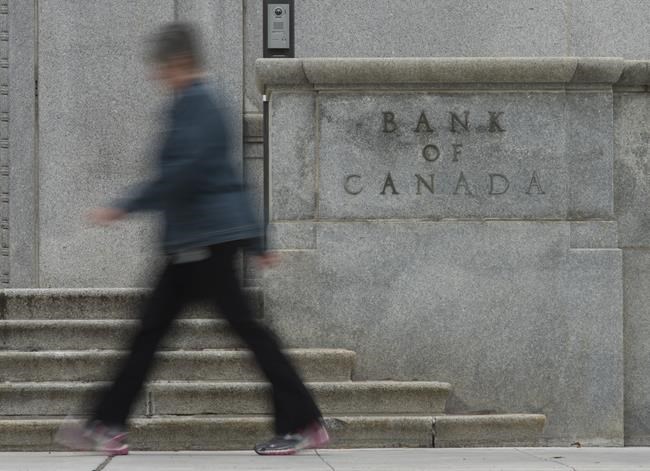OTTAWA — In an unprecedented move, the Bank of Canada has announced a major increase to its key interest rate for the second time in two months, saying it is "prepared to act more forcefully" as it forecasts higher consumer prices to come this year.
The central bank raised its policy rate Wednesday by half a percentage point to 1.5 per cent — just a quarter-point below its pre-pandemic level — and warned that rates will need to ratchet up further to rein in inflation.
Russia’s invasion of Ukraine, COVID-19 lockdowns in China and backlogged supply chains are fuelling “uncertainty” and higher prices for energy and food, the institution said. Those global pressures, along with low unemployment rates at home, will likely push inflation well past the bank's previously projected rate of nearly six per cent for the first half of the year.
The annual pace of inflation rose to 6.8 per cent in April, the fastest year-over-year rise in 31 years as the price of goods from gas to groceries continued to climb.
“With the economy in excess demand, and inflation persisting well above target and expected to move higher in the near term, the governing council continues to judge that interest rates will need to rise further," the central bank said. It further noted that the "risk of elevated inflation becoming entrenched has risen."
In April it increased its benchmark interest rate by half a percentage point to one per cent — the biggest hike in 22 years, and one that followed a quarter-point bump in March.
Wednesday's move marks the first back-to-back half-point hikes since scheduled rate announcements began in 2000.
The bank makes changes to its trendsetting interest rate in an effort to control inflation with a target of two per cent. Saying it is prepared to "act more forcefully" to meet that goal suggests more aggressive rate hikes are on the table.
Keeping longer-term expectations tethered to that target is essential to tamping down skyward prices. Employees and businesses are more likely to demand higher wages and jack up prices if they anticipate higher costs — a self-fulfilling prophecy quandary.
"I think we're right at the knife's edge," Bank of Montreal chief economist Douglas Porter said in an interview.
"I don't get the sense that the dam has completely broken. But we're just holding it back at this point. And one more shock or another couple of months of rapidly rising gasoline prices could basically unleash inflation expectations."
Hikes to the interest rate, which remains below the two-to-six per cent range maintained between the mid-1990s and 2008, take time to "work their magic" on consumer prices, Porter added. "Frankly they need a little bit of luck," he said of the bank's governing council.
Canadian Chamber of Commerce chief economist Stephen Tapp said he expects inflation will start to slow over the next few quarters, but could “easily exceed” six per cent this year and remain above the two per cent target through 2024.
“The longer inflation stays at headline-grabbing levels, the bigger are the risks that businesses, consumers and workers build above-target inflation into their actions, thereby perpetuating the inflation cycle,” he said in a statement.
Nearly 70 per cent of categories in the consumer price index now top three per cent inflation, the bank noted.
Its oversized interest rate increase came despite an economic slowdown during the first quarter.
Real gross domestic product grew a sturdy 3.1 per cent year over year in the first three months of 2022, bolstered by business investment and household spending, according to Statistics Canada data released Tuesday. But the outcome was down from the previous quarter's annualized rate of 6.6 per cent, due largely to a dip in export volumes.
While Bank of Canada governor Tiff Macklem in April stressed a “delicate balance” between higher interest rates and economic health, the bank voiced fewer reservations to pressing the brakes this time around.
"With consumer spending in Canada remaining robust and exports anticipated to strengthen, growth in the second quarter is expected to be solid," it said.
The likelihood of a near-term recession remains low, the Conference Board of Canada said in a statement, citing labour shortages, wage growth and recoveries in hospitality and travel.
The impact of rising interest rates is already visible in the housing market, which is just starting to cool after nearly two white-hot years. Home sales dropped 12.6 per cent in April from March, and sat more than one-quarter below sales figures from April 2021, according to the Canadian Real Estate Association. The home price index dipped 0.6 per cent month over month.
The bank is also easing pandemic-era stimulus measures by continuing so-called quantitative tightening, begun in April, as the government bonds it holds are no longer being replaced when they mature.
This report by The Canadian Press was first published June 1, 2022.
Christopher Reynolds, The Canadian Press


